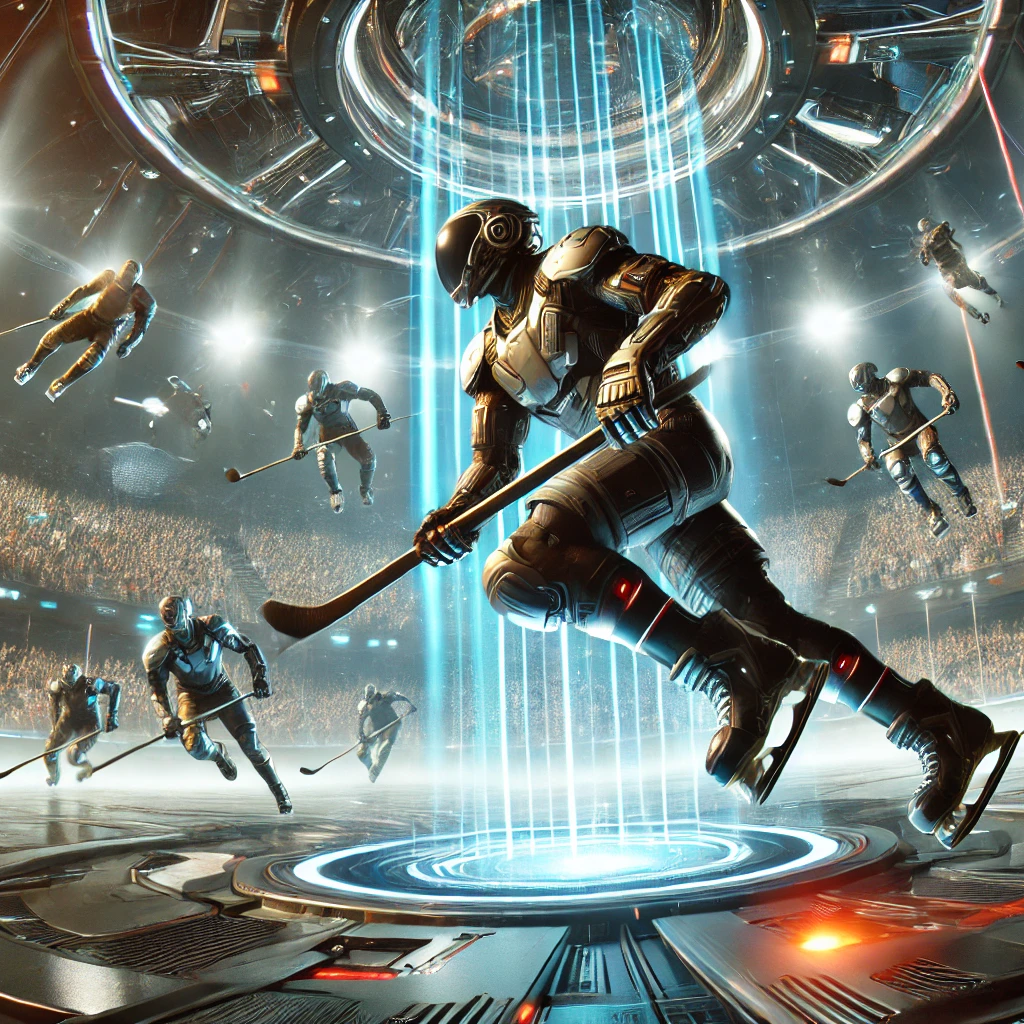Arena and Equipment
Arena: The game is played in a three-dimensional, enclosed arena, which could be spherical or cubic. The walls of the arena would feature grids or nets to aid player navigation and movement.
Skates: Players use magnetic or adhesive boots that allow them to maneuver on any metallic surfaces within the arena, replacing traditional ice skates.
Puck: A specially designed puck with small thrusters to maintain its speed and direction in three dimensions, ensuring smooth movement throughout the arena.
Player Movement
Maneuvering: Players employ a combination of handholds on the walls and propulsion packs or wrist-mounted jets for controlled movement in the zero-gravity environment.
Positioning: The lack of gravity requires players to strategize in three dimensions, mastering control over both vertical and horizontal spaces.
Game Mechanics
Goals: Goals are either placed at the center of opposite walls or are movable, adding a dynamic aspect to scoring.
Passes and Shots: Players must make precise passes and shots, considering the absence of friction. Laser pointers might be used to guide their aim.
Periods: The game consists of multiple periods similar to traditional hockey, with frequent breaks allowing players to regain their bearings and adjust their equipment.
Rules and Safety
Contact: Physical contact, such as body checks, is regulated strictly to prevent players from uncontrollably floating or colliding with walls at high speeds.
Safety Gear: Players wear enhanced helmets and body padding to protect against impacts with the walls or other players.
Officiating: Referees use drones or monitor the game from outside the arena to ensure fairness and safety.
Training
Practice: Players undergo extensive training in zero-gravity environments, utilizing space stations or specialized simulators.
Coordination: Emphasis is placed on team coordination and communication, crucial for operating cohesively in a three-dimensional space.
Summary
Zero-gravity hockey combines the fast-paced nature of traditional hockey with the complexity of three-dimensional play. It necessitates innovations in player movement, equipment, and arena design, making it a thrilling sport to watch and play.

